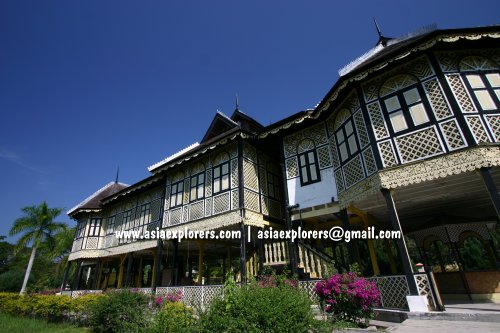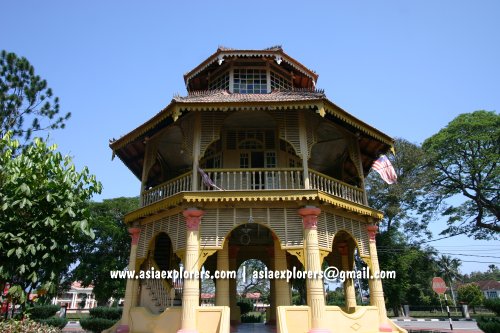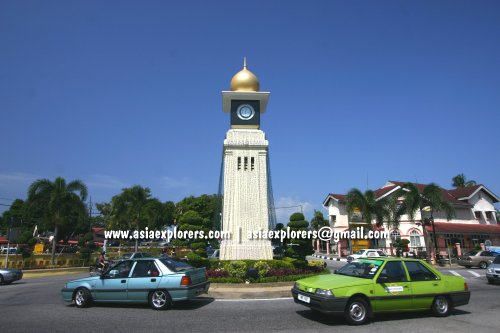
Istana Kenangan, Kuala Kangsar (31 January 2006)
© Timothy Tye using this photo
Getting there
The most practical way to reach Kuala Kangsar is by car. Exit the North-South Expressway (E1) at Exit 143.History of Kuala Kangsar
The name Kuala Kangsar is believed to have come from "Kuala Karong-Sa", which means "99 tributaries", referring to the tributaries that empty into the Perak River. Along the bend of the river, Sultan Yusuf Sharifuddin Mudzaffar Shah (1877-1887) erected his palace, Istana Sri Sayong. This was a strange decision, as the palace was exposed to enemy invasion as well as the unpredictable river. Even though an invasion did not materialize, its vulnerability to the elements proved to be its undoing when, the Big Flood or Air Bah of 1926 almost swept it away. Only then was a decision made to move the palace to higher ground. The site chosen was a gentle knoll close-by, on which today stands the present residence of the Sultan of Perak, the Istana Iskandariah, a fine piece of Art-Deco architecture.
Pavilion Square Tower, Kuala Kangsar (31 January 2006)
© Timothy Tye using this photo
The royal quarters, which include Istana Iskandariah, Istana Ulu, the Ubudiah Mosque and Istana Kenangan, all stand on one side of Kuala Kangsar, on a knoll called Bukit Chandan away from the rest of town, and separated by a large park along the riverbank called Dataran Sungai Perak.

Kuala Kangsar Clock Tower, Kuala Kangsar (31 January 2006)
© Timothy Tye using this photo
Chronology of Kuala Kangsar Architectural Heritage
The following are dates associated with the major landmarks in Kuala Kangsar:1877 - First Rubber Tree in Malaya was planted.
1903 - Istana Ulu was built.
1905 - Kuala Kangsar Malay College opened.
1917 - Ubudiah Mosque was built.
1926 - Istana Iskandariah and Istana Kenangan were built.
1930 - Pavilion Square Tower was built.
Near to Kuala Kangsar, across the Perak River, is the village of Sayong which is famous for its water gourds.
reference:
No comments:
Post a Comment